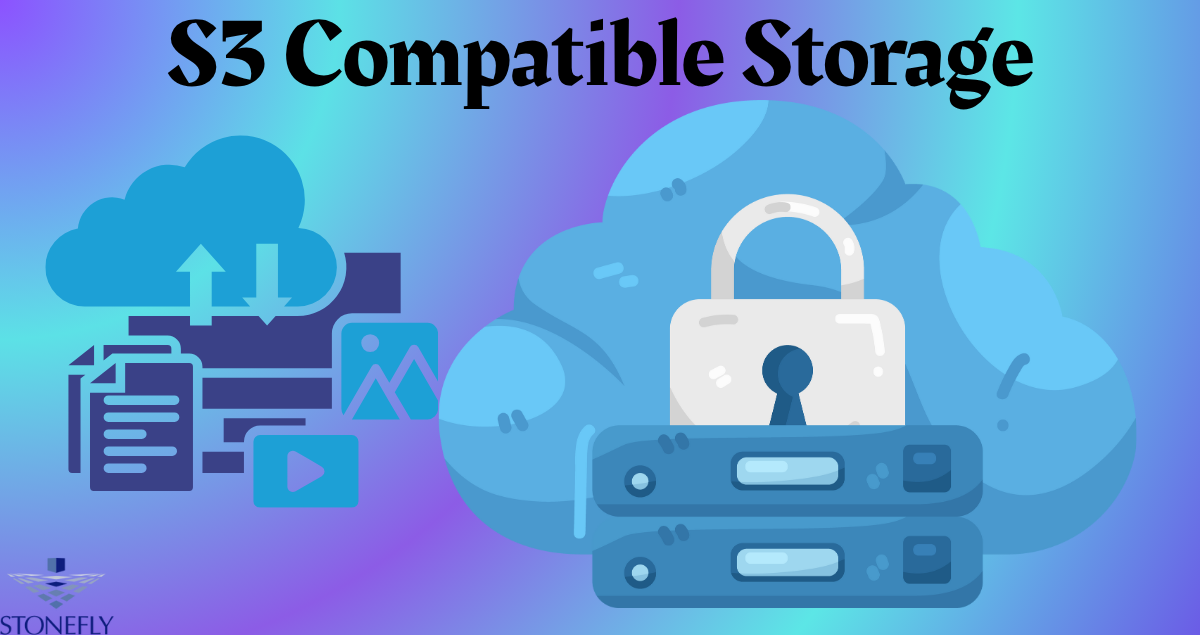How S3 Compatible Storage Strengthens Enterprise Data

How S3 Compatible Storage Strengthens Enterprise Data Strategy
Enterprises today rely on massive volumes of digital
data—ranging from analytics logs to high-resolution media files and critical
business records. Managing this data efficiently requires storage systems that
can scale, integrate, and remain cost-effective. S3 Compatible Storage
has become a reliable solution for organizations seeking high-performance,
flexible, and secure data storage without vendor dependency. By adopting this
approach, businesses ensure control over their data infrastructure while achieving
the scalability once limited to public cloud platforms.
Understanding the Foundation of Object-Based Storage
Unlike traditional file or block systems, object storage
treats data as independent entities called “objects.” Each object contains the
data itself, metadata, and a unique identifier, allowing quick access and easy
management. This design makes it ideal for enterprises dealing with millions or
billions of data items, as it eliminates the hierarchy limitations of
conventional storage systems.
For growing companies, scalability and accessibility are
non-negotiable. Object storage, particularly with S3 compatibility, meets these
needs by offering a system that expands seamlessly and supports data-heavy
applications without downtime.
Why S3 Compatibility Matters
S3 compatibility means the storage system supports the
widely used S3 API. This allows integration with backup tools, analytics
platforms, and enterprise software that already depend on the S3 protocol.
Businesses can migrate or expand data storage without redesigning existing
workflows.
With S3 Compatible Storage, organizations maintain
flexibility. They can use the same applications, commands, and API calls
they’re familiar with while running storage infrastructure on-premise, in
hybrid setups, or across multiple clouds. This reduces dependency on
proprietary systems and provides greater control over where data resides.
Key Benefits of S3 Compatible Storage
1. Scalable Infrastructure for Large Data Sets
Modern enterprises manage petabytes of information.
S3-compatible systems allow them to scale horizontally—simply add more nodes or
drives as data grows. There’s no need for major architectural overhauls or
disruptions to ongoing operations.
2. Lower Long-Term Costs
Data archiving can be expensive, especially when tied to
proprietary platforms. S3 compatibility supports cost-efficient, commodity
hardware and flexible tiering models. Businesses can balance performance and
cost by placing frequently accessed data on high-speed storage while offloading
archival content to lower-cost tiers.
3. Simplified Data Management
Object storage uses metadata-driven organization. This
approach allows easy search, categorization, and automated management of large
datasets. Instead of dealing with complex directory structures, IT teams can
manage data through simple policies and API-based automation.
4. Data Durability and Reliability
S3-compatible systems replicate data across multiple
locations, ensuring availability even during hardware failures. Some architectures
employ erasure coding for added redundancy—dividing and storing data fragments
across nodes to improve fault tolerance and data recovery.
5. Multi-Environment Flexibility
S3 compatibility supports hybrid and multi-cloud operations.
Enterprises can store critical data locally while keeping secondary copies in
remote environments for redundancy. This flexibility ensures business
continuity in case of localized disruptions or disasters.
S3 Compatible Storage in Enterprise Workflows
Data Backup and Archiving
Backups are essential for business continuity, and S3
compatibility ensures smooth integration with backup software that already
supports the S3 protocol. It enables policy-based retention, versioning, and
data immutability for long-term protection against corruption or ransomware
attacks.
Analytics and AI Workloads
Big data analytics and machine learning workloads demand
quick and consistent access to large datasets. S3-compatible systems integrate
seamlessly with analytics tools, providing scalable and efficient storage for
both raw and processed data.
Media and Digital Content Storage
Media industries handle enormous files—videos, graphics, and
production assets. Object-based systems eliminate storage bottlenecks and
provide reliable access for editing, rendering, and distribution workflows.
Security and Compliance Capabilities
Enterprises must protect their data while meeting strict
regulatory requirements. S3 Compatible Storage provides encryption at
rest and during transit, ensuring that sensitive data remains secure throughout
its lifecycle. Role-based access control and audit logging also help
organizations meet compliance frameworks like GDPR and HIPAA.
Data immutability features further strengthen defense
against ransomware by preventing changes to data for a defined retention
period. This ensures that backup copies remain untouched and recoverable.
Hybrid Deployment Advantages
Hybrid setups are gaining popularity as they combine the
performance of local systems with the scalability of external environments.
S3-compatible infrastructure allows businesses to store critical workloads
on-site while using offsite nodes for backup or archiving. The result is
improved redundancy, performance, and cost balance without giving up control
over critical information.
Implementation Best Practices
When adopting S3-compatible systems, enterprises should
focus on:
- Defining
clear data lifecycle policies to manage storage costs efficiently.
- Implementing
redundancy strategies that span across multiple physical or virtual
sites.
- Integrating
with monitoring tools for real-time visibility and performance
optimization.
- Automating
backup and replication using standard S3 API commands.
By following these best practices, businesses create a
stable foundation for long-term data growth and resilience.
The Future of Data Storage
Data volumes will continue to increase across industries,
from IoT to AI-driven applications. S3-compatible platforms provide the
flexibility and scalability required to handle this shift. Their open nature
allows integration with emerging technologies and ensures enterprises remain
agile as storage requirements evolve.
Organizations embracing this technology position themselves
to manage massive datasets with greater security, lower costs, and seamless
accessibility.
Conclusion
S3 Compatible Storage provides enterprises with a
balanced approach to managing large-scale data. It offers the scalability of
modern object storage, the interoperability of S3 APIs, and the control of
private infrastructure. By adopting this technology, organizations ensure data
durability, regulatory compliance, and operational efficiency—all without being
locked into a single ecosystem.
FAQs
1. What does S3 Compatible Storage mean?
It refers to a storage system that supports the S3 API,
allowing seamless integration with tools and applications designed for S3
environments.
2. Can I use S3 Compatible Storage for hybrid cloud setups?
Yes, it’s ideal for hybrid environments, enabling local and
remote data management through a single interface.
3. How does it protect data against loss or corruption?
Replication, erasure coding, and immutability features
ensure high durability and protection against both hardware failures and
cyberattacks.
4. Is S3 Compatible Storage suitable for AI and analytics workloads?
Absolutely. It supports scalable access to massive datasets
required for training and analytics processes.
5. What are the main cost advantages of using S3 Compatible Storage?
It reduces expenses by supporting commodity hardware and
efficient tiering, eliminating dependency on expensive proprietary systems.




